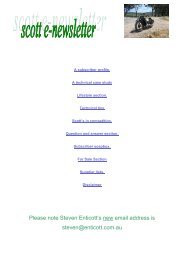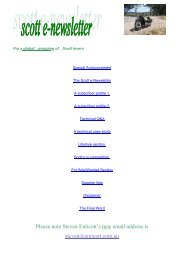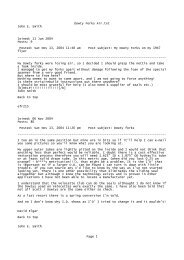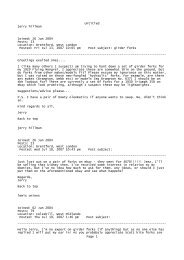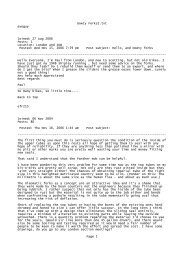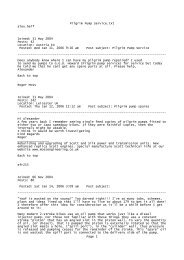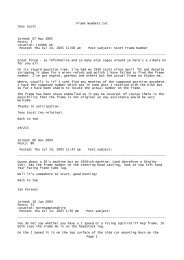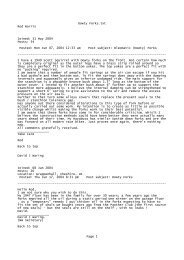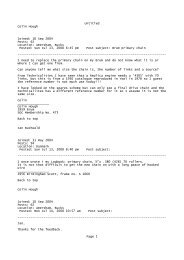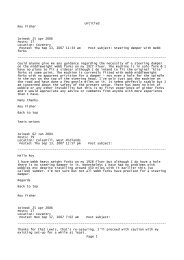to Download PDF file - Moss Engineering
to Download PDF file - Moss Engineering
to Download PDF file - Moss Engineering
Create successful ePaper yourself
Turn your PDF publications into a flip-book with our unique Google optimized e-Paper software.
was in his care. He <strong>to</strong>ld me that Nick had sold the bike and it had passed in<strong>to</strong><br />
the<br />
ownership of a gentleman who was having it rebuilt and that it was intended that<br />
the best components from the two gearboxes would be used <strong>to</strong> make one<br />
serviceable unit. I was asked, if I wished <strong>to</strong> have a brief loan the rejected set of<br />
gearbox components, for the purpose of making drawings of them. This would<br />
make it possible <strong>to</strong> make a faithful copy at a future date, rather than the easier<br />
but non-standard route of modifying a three speed box. The latter option being<br />
in<br />
contravention of the eligibility regulations for Vintage Racing.<br />
My friend said that several of the gears were marked 30TT and that this would<br />
be<br />
evidence that this design was produced in pre production form at that date. This<br />
was important as the cut off date for the “Vintage” class in racing was, at that<br />
time, Dec 31st 1930. If the box was produced after that date, then the bike<br />
would<br />
be put in<strong>to</strong> the next age class “Post Vintage”. I like riding and rode the Scott in<br />
the Vintage events and a 39 T100 Triumph in the Post Vintage class. This<br />
enabled me <strong>to</strong> get four rides per meeting instead of just two.<br />
I have a most talented friend named Tony Pacey of Mel<strong>to</strong>n Mowbray, who in his<br />
early years had been an engineer’s pattern maker. Although, at his place of<br />
work,<br />
he had progressed <strong>to</strong> technical management, he still enjoyed the challenge and<br />
fulfilment that came from producing an interesting pattern privately. I visited<br />
Tony<br />
and discussed the project. He assured me that he would be able <strong>to</strong> make<br />
patterns that would produce an exact replica of the Scott gearbox castings even<br />
down <strong>to</strong> the location of casting split lines. While Tony made each pattern, the<br />
original castings were measured and full engineering drawings produced. On<br />
completion, the patterns were sent <strong>to</strong> the Leicester foundry of R C Harrison Ltd,<br />
who were acknowledged experts, for the castings <strong>to</strong> be produced in heat<br />
treated<br />
LM 14, which is the old “Y” alloy pis<strong>to</strong>n alloy.<br />
When correctly processed, this grade, machines very well and results in a <strong>to</strong>ugh<br />
casting with strong threads, without resorting <strong>to</strong> none standard “Helicoil” thread<br />
inserts. The drawings having been produced for both castings and rotating<br />
parts,<br />
the next step was <strong>to</strong> review the design. It was evident that as the normal Scott<br />
gearbox was short in body <strong>to</strong> accommodate the inside primary chain line, so it<br />
had been a challenge <strong>to</strong> incorporate a further ratio in<strong>to</strong> this limited space.<br />
The gearchange mechanism had been located above the gears and was a most<br />
elaborate design. It used a face cam <strong>to</strong> push either forward or reverse plungers<br />
which were each equipped with a swing out pawl, rather like a small version of a




